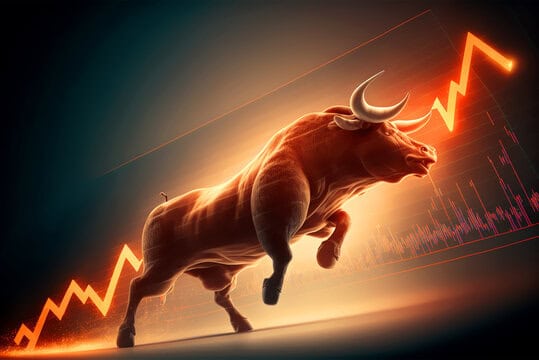The S&P 500 closed up more than 20% from its October lows on Thursday, marking the start of a new bull market.
At 248 trading days, the recent run back to a bull market was the longest bear run for the S&P since 1948. The resilient rise of the benchmark index came amid the most aggressive Federal Reserve rate hike campaign in four decades, regional banking turmoil and incessant recession worries that haven’t fully materialized.
Research from Bank of America indicates the S&P 500 rises 92% of the time in the 12 months following the start of a bull market, compared to the historical 75% average over any 12 month period dating back to the 1950s.
“We are back in bull territory, which might be part of what it takes to get investors enthusiastic about equities again,” Savita Subramanian and the equity strategy team at Bank of America Global Research wrote in a note on Friday. “If investors feel pain in bonds, via lower returns or negative opportunity costs – likely if real rates rise from here – they should be incented to return to equities, especially equities that benefit from rising real rates (cyclicals).”
History shows the average path up for stocks might not be linear. Carson Group Chief Market Strategist Ryan Detrick tracked 13 times stocks bounced up 20% off a 52-week low since 1956. In the first three months stocks were usually choppy, with the benchmark index actually falling 0.5% on average in the first month upon hitting bull market territory.
But in the long run, things have been overly positive. After rallying 20% from market lows, the S&P 500 averaged a 10% return over the next six months and 17.7% over the next 12 months, per Detrick’s research.
“As we’ve been saying this full year, we continue to expect stocks to do well this year and the upward move is firmly in place and studies like this do little to change our opinion,” Detrick said.
A recent chart from Bespoke spells out how stocks usually perform in the months after entering a bull market.
The path higher for stocks still remains a rocky one. Next Wednesday, markets are expecting the Federal Reserve to pause its interest rate hiking process. That’s not necessarily a tailwind for stocks, though, as economists believe the Federal Reserve’s pause would come as it waits for the “lagging impact” of it’s fiscal policy.
In that case, a slowdown in economic growth would likely come, allowing inflation to ease but also potentially pressuring earnings growth as well. Morgan Stanley recently pointed out this scenario when calling for a 16% decline in corporate profits by the end of the year.
But in the long run, as always, history will remain on stocks’ side.
“Sentiment, positioning, fundamentals and supply/demand support that being underinvested in stocks and cyclicals is still the key risk today – the more likely direction of surprise is still positive,” Subramanian and BofA wrote.

